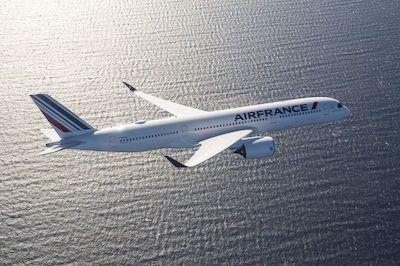Fri, Jan 01, 2021
AD 2020-26-21 Requires A Rotating Probe Test Of All Fastener Holes Located In The Affected Area
The FAA is adopting a new airworthiness directive (AD) for certain Airbus SAS Model A350-941 airplanes.

This AD was prompted by a report that during the assembly of a certain section of the fuselage, the gaps found on self-aligning nuts for eight fasteners were out of tolerance. This AD requires a rotating probe test of all fastener holes located in the affected area for any discrepancies, an eddy current inspection of the surrounding flange for any discrepancies, a detailed inspection of certain frames for any discrepancies, and corrective actions if necessary, as specified in a European Union Aviation Safety Agency (EASA) AD, which is incorporated by reference. The FAA is issuing this AD to address the unsafe condition on these products. This AD is effective February 3, 2021.
Supplementary Information: The EASA, which is the Technical Agent for the Member States of the European Union, has issued EASA AD 2020-0109, dated May 15, 2020 (EASA AD 2020-0109) (also referred to as the Mandatory Continuing Airworthiness Information, or the MCAI), to correct an unsafe condition for certain Airbus SAS Model A350-941 airplanes.
The FAA issued a notice of proposed rulemaking (NPRM) to amend 14 CFR part 39 by adding an AD that would apply to certain Airbus SAS Model A350-941 airplanes. The NPRM published in the Federal Register on August 4, 2020 (85 FR 47122). The NPRM was prompted by a report that during the assembly of the section 19 skin to frame (FR) 98 joint of the fuselage, the gaps found on self-aligning nuts for eight fasteners were out of tolerance. The NPRM proposed to require a rotating probe test of all fastener holes located in the affected area for any discrepancies, an eddy current inspection of the surrounding flange for any discrepancies, a detailed inspection of certain frames for any discrepancies, and corrective actions if necessary, as specified in an EASA AD.
The FAA is issuing this AD to address gaps that are out of tolerance, which could reduce the fatigue and damage tolerance properties of the affected area, and possibly affect the structural integrity of the rear cone of the fuselage. See the MCAI for additional background information.
More News
“While legendary World War II aircraft such as the Corsair and P-51 Mustang still were widely flown at the start of the Korean War in 1950, a new age of jets rapidly came to >[...]
Decision Altitude (DA) A specified altitude (mean sea level (MSL)) on an instrument approach procedure (ILS, GLS, vertically guided RNAV) at which the pilot must decide whether to >[...]
Aero Linx: National Aviation Safety Foundation (NASF) The National Aviation Safety Foundation is a support group whose objective is to enhance aviation safety through educational p>[...]
Also: Cal Poly Aviation Club, $$un Country, Arkansas Aviation Academy, Teamsters Local 2118 In response to two recent general aviation accidents that made national headlines, more >[...]
“The FAA is tasked with ensuring our skies are safe, and they do a great job at it, but there is something about the system that is holding up the medical process. Obviously,>[...]
 Aero-News: Quote of the Day (04.28.25)
Aero-News: Quote of the Day (04.28.25) ANN's Daily Aero-Term (04.28.25): Decision Altitude (DA)
ANN's Daily Aero-Term (04.28.25): Decision Altitude (DA) ANN's Daily Aero-Linx (04.28.25)
ANN's Daily Aero-Linx (04.28.25) Airborne-Flight Training 04.24.25: GA Refocused, Seminole/Epic, WestJet v TFWP
Airborne-Flight Training 04.24.25: GA Refocused, Seminole/Epic, WestJet v TFWP Aero-News: Quote of the Day (04.29.25)
Aero-News: Quote of the Day (04.29.25)



